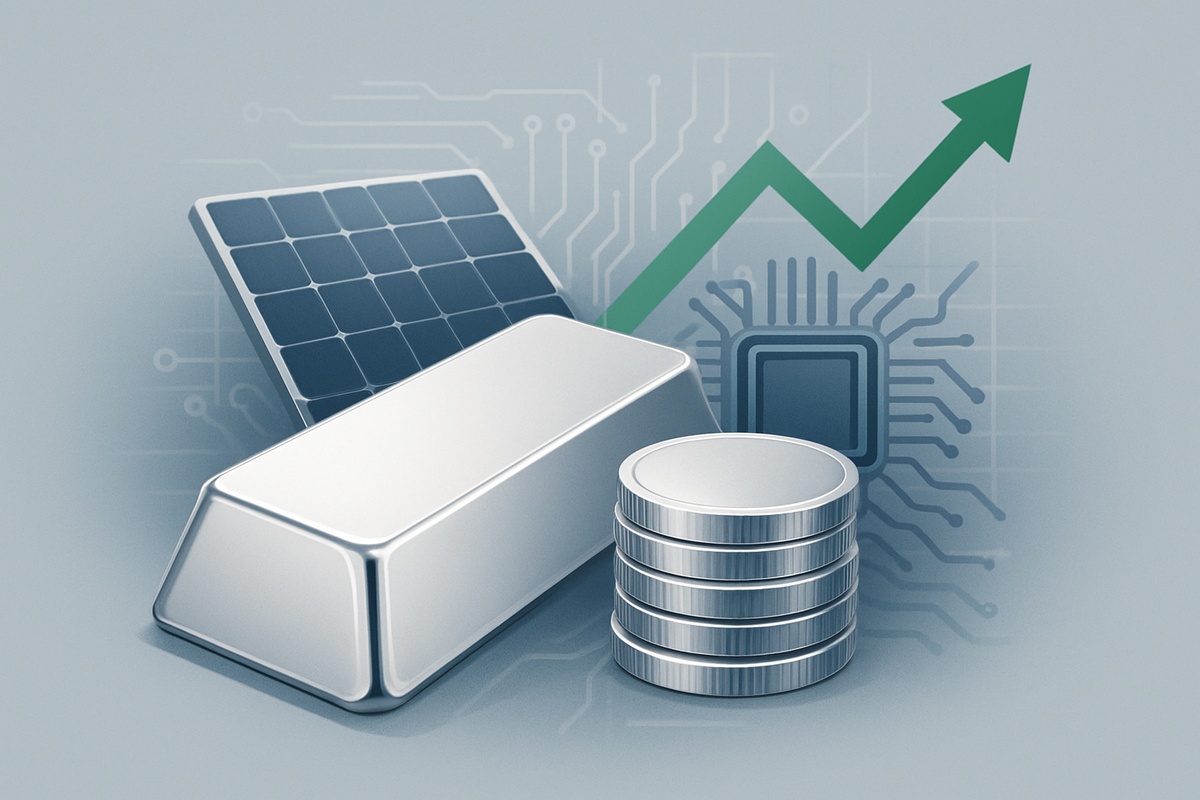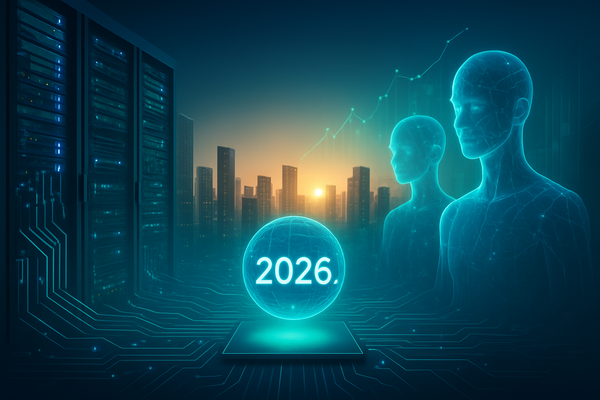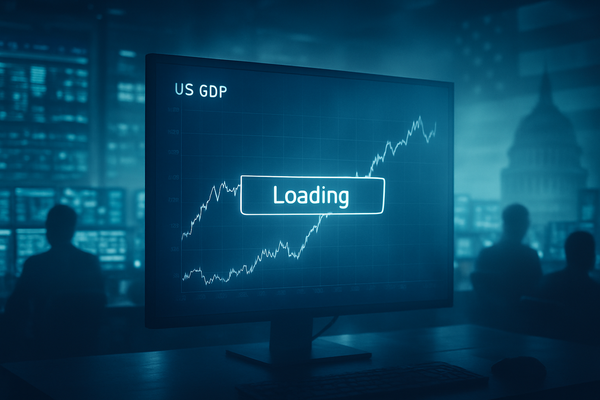Silver Poised for Historic Market Reversion in 2025: A Confluence of Monetary Shifts, Supply Squeeze, and Surging Demand

The global financial markets are buzzing with anticipation as analysis suggests silver is primed for a monumental market reversion in 2025. Experts and market strategists are increasingly pointing to a perfect storm of monetary factors, deepening supply constraints, and relentlessly rising demand trends that could propel the white metal into a new era of price discovery. This anticipated shift reflects a fundamental re-evaluation of silver's intrinsic value, positioning it not just as a traditional safe-haven asset but also as a critical industrial commodity essential for the burgeoning green economy.
Currently trading significantly below its inflation-adjusted historical peaks, silver's undervaluation is becoming a central theme in commodity outlooks. Forecasts hint at price targets ranging from $40 to $60 per ounce by early 2026, driven by an unprecedented structural imbalance that favors substantial upside movement. As central banks navigate complex economic landscapes and industrial innovation accelerates, silver's dual nature—as both a precious metal and an indispensable industrial input—is setting the stage for what could be one of the most significant commodity rallies of the decade.
The Perfect Storm: Monetary Tailwinds, Scarce Supply, and Insatiable Demand
The thesis for silver's massive market reversion in 2025 is built upon three pillars: evolving monetary policies, persistent deficits in physical supply, and an explosion in industrial and investment demand. Each factor, independently potent, becomes exponentially more impactful when viewed in concert, creating a compelling narrative for silver's upward trajectory.
Monetary factors are providing a significant tailwind. With global money supplies having expanded dramatically due to years of quantitative easing, concerns over inflation and currency debasement are pushing investors towards tangible assets. Silver, historically a hedge against such pressures, is seen as a prime beneficiary. When adjusted for inflation, silver's peak price of nearly $50 per ounce in January 1980 translates to an astounding $176-$180 in today's purchasing power, highlighting its current undervaluation. Furthermore, anticipated interest rate cuts throughout 2025 are expected to reduce the opportunity cost of holding non-yielding assets like silver, making it more attractive. Geopolitical tensions and economic uncertainties are also fueling safe-haven demand, a trend underscored by silver's 47% price surge during the 2020 global crisis. The historically high gold-silver ratio, which reached levels around 91.6 in July 2025 compared to a long-term average of 67, strongly suggests silver is significantly undervalued relative to gold, indicating a likely mean reversion where silver substantially outperforms.
On the supply side, the market is grappling with severe and persistent limitations. 2025 is projected to mark the fifth to eighth consecutive year of substantial supply deficits, with shortfalls potentially exceeding 200 million ounces. This structural imbalance arises because industrial and investment demand consistently outpaces combined mining production and recycling. A critical aspect of this constraint is silver's byproduct nature; approximately 70% of global silver production comes as a byproduct of mining other base metals like copper, lead, and zinc. This means silver supply cannot rapidly increase in direct response to higher silver prices, creating an inelastic supply curve. Compounding this, existing mines are facing declining ore grades, necessitating higher capital expenditure and energy inputs to maintain output, while chronic underinvestment in exploration over the past decade has choked off future supply pipelines. The physical market is already showing signs of acute stress, with exchange-monitored silver stocks declining by over 100 million ounces since 2021, reports of reduced dealer inventories, extended delivery times, and expanding physical market premiums.
Finally, accelerating demand trends are cementing the bullish outlook. Industrial applications now account for approximately 60% of total global demand, a significant shift from historical patterns where investment dominated. This industrial demand is expected to remain near record levels in 2025, potentially exceeding 700 million ounces. A major driver is the burgeoning "green economy," particularly solar photovoltaics (PVs) and electric vehicles (EVs), alongside general electronics and artificial intelligence (AI). Solar energy alone consumed 232 million ounces in 2024, a substantial increase, and is projected to account for 85-98% of current global silver reserves by 2050. Despite the industrial surge, investment demand for physical silver (bars and coins) and silver-backed Exchange-Traded Products (ETPs) remains robust, sustained by economic uncertainties and silver's perceived undervaluation.
Companies Poised for Gains or Facing Strategic Shifts
A significant market reversion in silver prices will inevitably create winners and losers across various industries, particularly impacting mining companies, refiners, and manufacturers heavily reliant on the metal.
Silver mining companies stand to be the most direct beneficiaries. Major producers like Fresnillo PLC (LSE: FRES), Pan American Silver Corp. (NASDAQ: PAAS), Hecla Mining Company (NYSE: HL), and First Majestic Silver Corp. (NYSE: AG) could see substantial increases in revenue and profitability as the price of their primary output rises. Companies with lower operating costs and diversified portfolios, which also produce base metals, might be particularly well-positioned to capitalize on higher silver prices without being solely dependent on them. For instance, BHP Group (ASX: BHP / NYSE: BHP) and Glencore plc (LSE: GLEN), while primarily diversified miners, do produce significant amounts of silver as a byproduct, and would see an uplift in their precious metals segment. Exploration and development companies focused on new silver deposits could also attract significant investment.
Conversely, industries that are major consumers of silver for manufacturing, such as solar panel producers, electronics manufacturers, and automotive companies, might face increased input costs. While the "green economy" is a major demand driver, a sharp rise in silver prices could put pressure on profit margins for companies like First Solar, Inc. (NASDAQ: FSLR) or Tesla, Inc. (NASDAQ: TSLA), which use silver in their products. However, given the relatively small proportion of silver's cost in the final product for many high-tech goods, the impact might be manageable, or companies may seek to innovate with alternative materials or more efficient silver usage. Refiners and fabricators, such as Johnson Matthey PLC (LSE: JMAT) or Umicore SA (EBR: UMI), could see increased demand for their services but might also face challenges in sourcing sufficient physical silver at competitive prices if supply constraints tighten further. The potential for higher silver prices could also spur innovation in recycling technologies, benefiting companies involved in urban mining and precious metal recovery.
Wider Implications: A Green Economy Catalyst and Commodity Supercycle Indicator
Silver's anticipated market reversion in 2025 is more than just a price movement for one commodity; it carries wider significance, potentially serving as a bellwether for broader industry trends, a catalyst for the green economy, and an indicator within the unfolding commodity supercycle.
This event fits squarely into the broader narrative of a commodity supercycle, driven by massive global infrastructure spending, de-dollarization trends, and the energy transition. As governments worldwide commit to decarbonization targets, the demand for "green metals" like silver, copper, and lithium is surging. Silver's integral role in solar panels, electric vehicles, and 5G technology positions it at the forefront of this industrial revolution. A significant price increase in silver could signal robust demand across the entire green technology supply chain, potentially driving up prices for other critical industrial metals as well. This could create ripple effects, increasing the cost of renewable energy projects in the short term, but also incentivizing greater investment in mining and recycling infrastructure over the long term. Regulatory bodies and policymakers might face pressure to ensure stable supply chains for these critical materials, potentially leading to new incentives for domestic mining or strategic stockpiling.
Historically, silver has often moved in tandem with gold but with greater volatility, earning it the moniker "poor man's gold." However, its increasing industrial utility distinguishes its current trajectory. The last major silver bull run in the late 1970s and early 2010s was largely driven by inflation fears and investment demand. While those factors are present now, the added dimension of unprecedented industrial demand from the green revolution provides a unique and potentially more sustainable foundation for growth. Comparisons can also be drawn to the early 2000s commodity boom, where sustained demand from emerging economies drove prices higher across the board. The current situation, however, is amplified by a global, coordinated push towards electrification and sustainable energy, making silver's role even more pronounced. This could also accelerate research and development into silver-saving technologies or alternative materials, though the unique properties of silver often make it difficult to substitute effectively.
The Road Ahead: Opportunities, Challenges, and Strategic Pivots
Looking ahead, the silver market in 2025 and beyond presents both significant opportunities and challenges for investors, industries, and policymakers. The anticipated market reversion is likely to usher in a period of heightened volatility but also substantial potential for capital appreciation.
In the short term, the market will likely react to incoming economic data, central bank pronouncements on interest rates, and ongoing geopolitical developments. Investors should watch for continued drawdowns in exchange-held inventories, further reports of physical shortages, and any shifts in the gold-silver ratio, which could signal silver's readiness to outperform. For industries, the immediate challenge will be managing increased input costs, potentially leading to price adjustments for end products or a renewed focus on supply chain efficiency. Long-term possibilities include a sustained bull market for silver, driven by the relentless expansion of the green economy and continued monetary uncertainty. This could lead to a revitalization of the silver mining sector, attracting new capital for exploration and development, particularly in regions with untapped reserves. Strategic pivots might include increased vertical integration for manufacturers to secure silver supply, or greater investment in advanced recycling technologies to create a more circular economy for the metal.
Market opportunities will emerge for investors in physical silver, silver-backed ETFs, and silver mining equities. Derivative markets could also see increased activity as participants seek to hedge against or speculate on price movements. Challenges include the inherent volatility of the commodity market, potential regulatory interventions if prices surge too rapidly, and the risk of demand destruction if prices become prohibitive for certain applications. Potential scenarios range from a steady, sustained climb reflecting fundamental shifts, to a more parabolic move driven by speculative fervor. A critical outcome to watch for is whether the industrial demand for silver continues its aggressive growth trajectory, underpinning the price appreciation.
A New Dawn for Silver: Key Takeaways and Investor Watchpoints
The comprehensive analysis points to 2025 as a pivotal year for silver, poised for a massive market reversion driven by powerful, interlocking forces. The convergence of accommodative monetary policies, an acute and structural supply deficit, and an explosion in industrial demand—particularly from the burgeoning green economy—creates a compelling case for significant price appreciation. Silver's dual identity as both a monetary hedge and an indispensable industrial metal positions it uniquely in the current economic landscape.
Moving forward, the market will likely be characterized by increased investor interest and potentially higher volatility. The consistent supply deficits, coupled with inelastic production due to silver's byproduct nature, suggest that any substantial increase in demand will exert significant upward pressure on prices. The "green revolution" is not merely a trend but a fundamental economic transformation, ensuring a sustained and growing appetite for silver in solar panels, electric vehicles, and advanced electronics for decades to come.
Investors should closely monitor several key indicators in the coming months: the trajectory of global inflation and central bank interest rate policies, the ongoing depletion of physical silver inventories, and the gold-silver ratio for signals of silver's relative undervaluation. Furthermore, keeping an eye on industrial production data, particularly within the solar and EV sectors, will provide insights into the strength of demand. The long-term significance of this potential reversion extends beyond mere commodity price movements; it underscores the critical role of tangible assets in an era of monetary expansion and highlights the foundational importance of specific raw materials to the future of global technology and energy.
This content is intended for informational purposes only and is not financial advice



